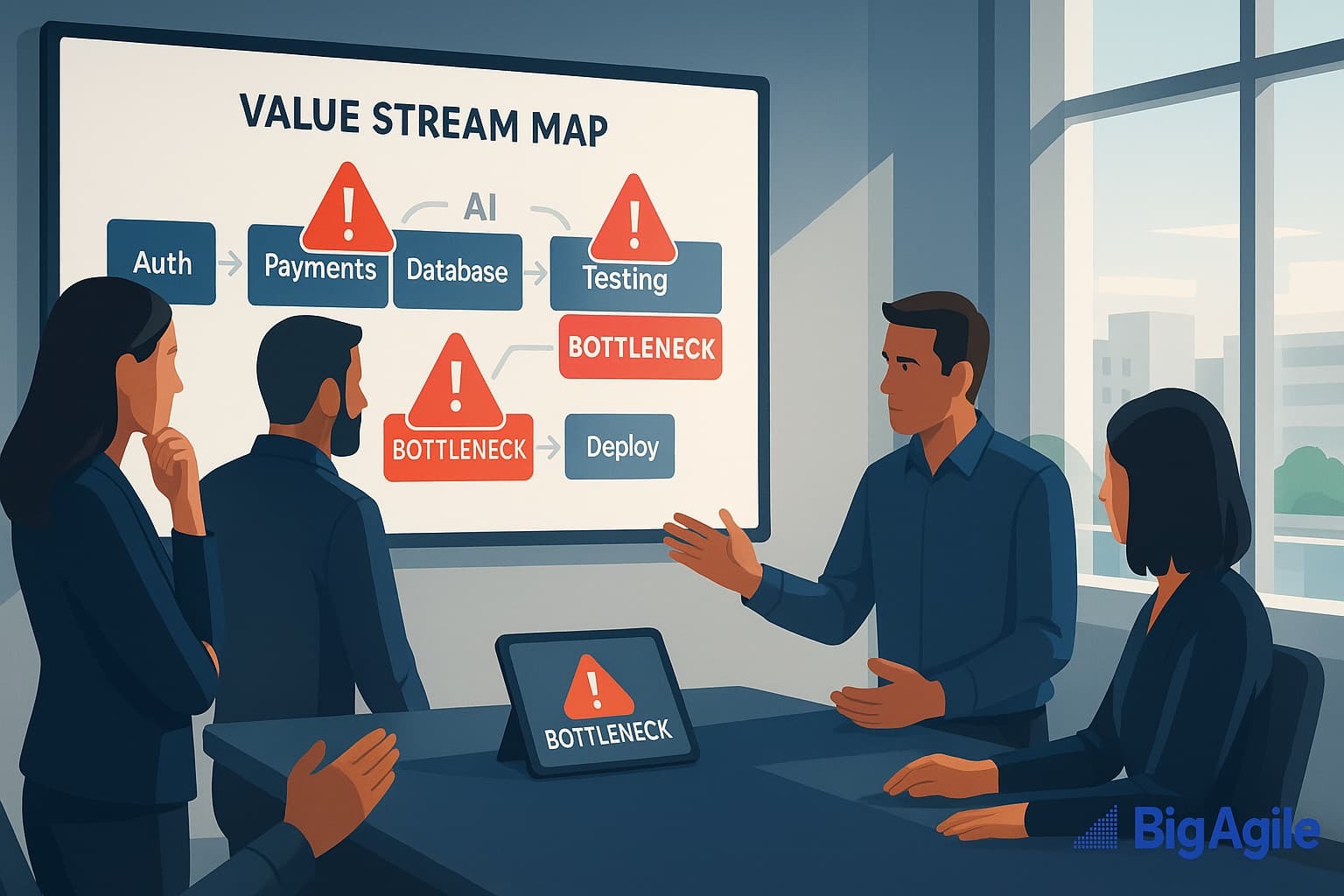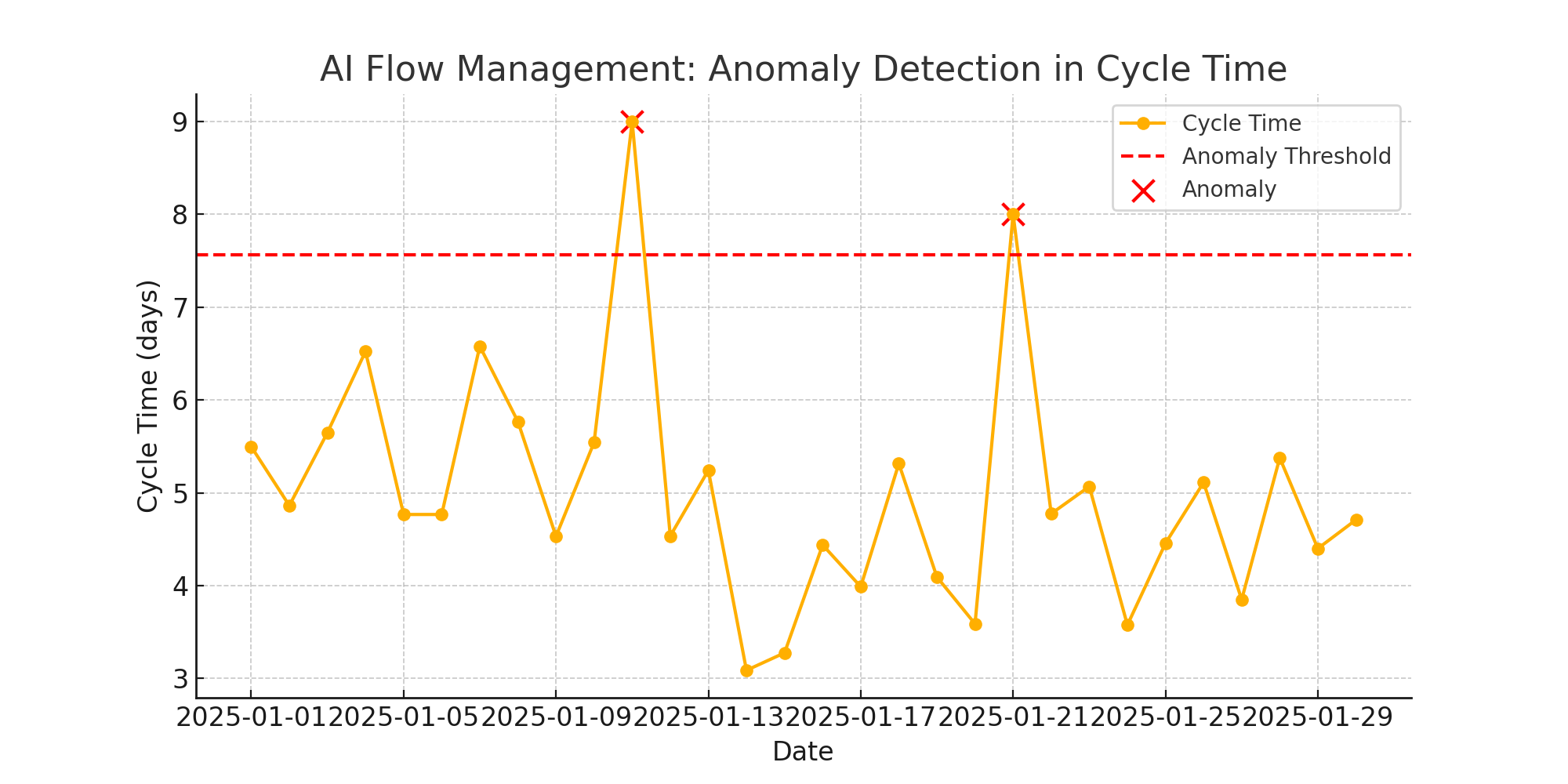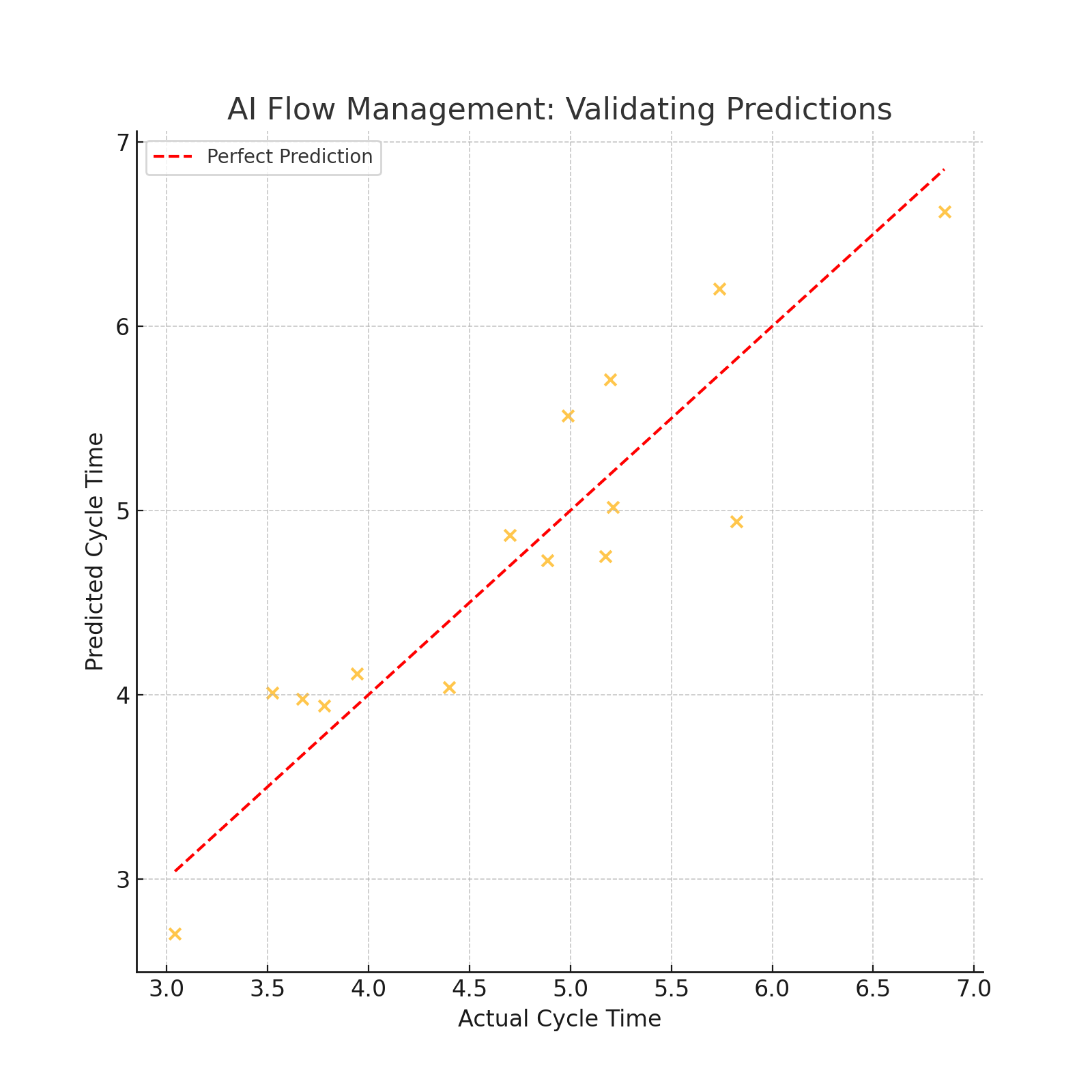
Midway through a sprint, a Kanban team’s AI analytics dashboard flashed an alert: “High probability of downstream delay in QA within 3 days.” The forecast wasn’t based on guesswork; it drew from cycle time trends, WIP aging data, and historical dependencies.
The team paused their planned work, focused on the stories about to be blocked, and rebalanced their WIP. By the end of the week, the predicted bottleneck never occurred. It wasn’t luck; it was foresight powered by AI, paired with decisive human decision-making action.
What.
The Theory of Constraints (Schragenheim) teaches us that a system’s throughput is always limited by its most significant constraint. Throughput Accounting (Bragg) adds the lens for measuring and managing that constraint in financial and operational terms.
AI-powered flow analytics can now make these principles practical in real time by:
Monitoring cycle time to spot work items that deviate from normal flow.
Tracking WIP aging to surface stories at risk of stalling.
Analyzing dependency risk to anticipate where upstream or downstream handoffs could cause delays.
This combination lets Agile teams address constraints proactively instead of reacting to missed commitments.
So What.
In traditional agile flow management, bottlenecks are often found too late (or reactive), after deadlines slip or stakeholders start asking questions. With AI in the loop, the constraint can be identified while it’s forming, giving the team a chance to act.
The benefit isn’t just speed; it’s precision. AI can analyze patterns across sprints that humans might miss, allowing targeted interventions rather than broad, inefficient fixes. This protects throughput without creating unnecessary churn or overloading other parts of the system.
Now What.
If you’re considering AI for flow management:
Start small – Use anomaly detection to flag unusually slow-moving items before jumping to complex predictive scheduling.
Validate predictions – Compare AI alerts with actual outcomes to refine accuracy.
Build intervention playbooks – Decide in advance how the team will respond when an alert is triggered.
Keep humans in control – Let AI identify the “where” and “when,” but trust the team to choose the “how.”
This ensures that AI remains a tool for enabling action, not dictating it, but you can’t model flow without accurate, granular delivery data.

Anomaly Detection in Cycle Time
The anomaly detection chart tracks how long work items take to complete over time, with a statistical threshold marking what’s unusually slow compared to the team’s norm. Items plotted above this threshold are outliers that may signal emerging bottlenecks, dependency issues, or poorly sliced work. A healthy chart shows most points clustered well below the threshold, with only occasional anomalies that have clear explanations. When multiple items cross the line; especially of the same type, it’s a sign that the team should investigate and act, either swarming on at-risk items in progress or adjusting their process to prevent recurring delays. At minimum a discussion.

Validating AI Predictions
The prediction validation chart compares the AI’s forecasted cycle times against the actual times it took to complete work. Ideally, most points should hug the diagonal “perfect prediction” line, showing that the AI’s guidance is accurate and trustworthy for planning. Points far above the line mean the AI underestimated, creating risk of overcommitment; points far below suggest it overestimated, potentially leaving capacity unused. A good chart builds confidence in letting AI forecasts influence decisions, while a poor one signals the need for retraining the model or reducing its weight in planning until accuracy improves. Don't give up if the chart is "bad", just keep evaluating where we can tweak the prediction engine.
Minimum Starter Pack
Getting started with AI-powered flow management doesn’t require a complete overhaul of your toolset (usually LOL). It’s about building on what your team already uses. Whether your work lives in Jira, Azure DevOps, Trello, or another tracker, start by tapping into its built-in reporting or API to capture basic cycle time and WIP data. From there, choose analysis and visualization tools that feel natural in your workflow. Maybe that’s Power BI or Tableau for dashboard lovers, or lightweight Python scripts for data-savvy teams. The right choice is the one that your team will actually use, fits into your existing cadence, and makes it easy to turn insights into action without adding friction.
Summary of tools needed:
Work item tracking systems – Jira, Azure DevOps, Trello, Rally, etc., to supply data on cycle time, lead time, WIP, and dependencies.
Version control & CI/CD pipelines – GitHub, GitLab, Bitbucket, Jenkins for commit frequency, build times, and release patterns.
QA / test automation tools – Cypress, Selenium, Playwright for defect cycle times and bottleneck signals in quality gates.
Dependency management logs – Artifact repositories (e.g., Nexus, Artifactory) or dependency boards in Jira to identify blocked work.
A good practical starter stack for most teams teams:
Jira or Azure DevOps for tracking.
Power BI or Tableau connected to Jira API for visualizations.
Python + Prophet or scikit-learn for basic anomaly detection and forecasting.
Slack/MS Teams integration for playbook triggers.
Let's Do This!
AI is like a spotlight for your delivery flow, it can reveal where the work is slowing, but it can’t tell you why or what to do about it (just guess). By pairing AI-powered insights with the human skill of problem-solving, agile teams can address constraints before they choke throughput. The result? Our hope is that we build out our system to move faster, deliver more value, and learns how to prevent the next bottleneck before it starts.
We look forward to seeing you at one of our upcoming public workshops. Check out the topics to find what fits your needs, and reach out if you have questions. We’re happy to help you decide!